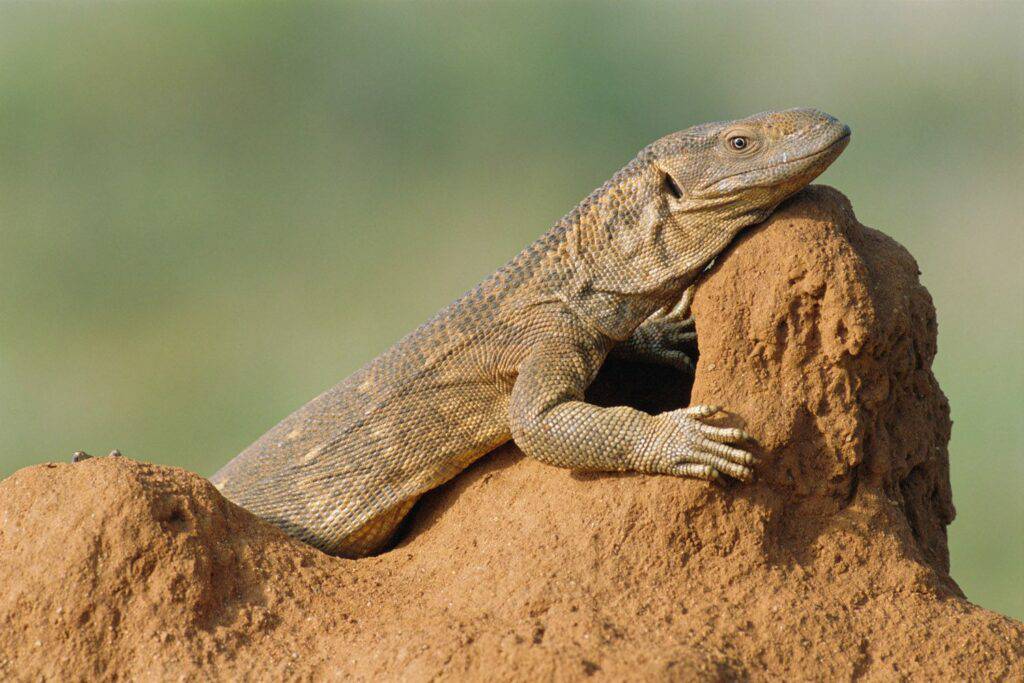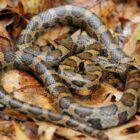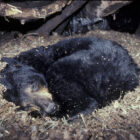Why Do Lizards Bask in the Sun?

To comprehend the intricate world of sunbathing in lizards, we must delve into the remarkable physiology of these cold-blooded creatures. Unlike warm-blooded mammals that can internally regulate their body temperature, lizards, as ectothermic animals, rely on external heat sources to maintain their metabolic activity and overall well-being.
The Physiology of Cold-Blooded Creatures
Ectothermy, also known as cold-bloodedness, means that lizards cannot generate heat internally through metabolic processes to the same extent as warm-blooded animals. Instead, they draw heat from their environment, making them highly dependent on external conditions such as ambient temperature, sunlight, and the thermal properties of surrounding surfaces.
The significance of sunbathing for lizards lies in their ability to optimize their physiological functions. As the sun’s rays reach their bodies, lizards absorb solar radiation, primarily in the form of visible light and infrared radiation. This influx of energy kick-starts crucial metabolic processes that are vital for their day-to-day functioning.
One key aspect of this physiological reliance on external heat is the lizard’s metabolic rate, which is intrinsically linked to temperature. As a lizard basks in the sun, its metabolic rate rises, facilitating essential activities such as digestion, nutrient absorption, and enzyme activity. This heightened metabolic state allows lizards to efficiently process the food they have consumed, contributing to their overall health and vitality.
Sunbathing: A Crucial Survival Mechanism
As ectothermic creatures, lizards lack the internal mechanisms that warm-blooded animals possess to regulate their body temperature. Consequently, they rely on external sources of heat, making basking in the sun a cornerstone of their thermoregulatory strategies.
The process of thermoregulation involves the delicate balance of absorbing and dissipating heat to maintain an optimal internal temperature. Lizards, being ectothermic, cannot generate heat internally and must rely on the external environment, especially the sun, to regulate their body temperature effectively.
When a lizard engages in sunbathing, it positions itself strategically to maximize exposure to sunlight. The sun’s warmth permeates their bodies, influencing their physiological processes. This absorption of solar radiation triggers a cascade of reactions within the lizard’s metabolism, elevating its internal temperature to levels conducive to essential bodily functions.
For lizards, thermoregulation is not a luxury but a necessity for survival. A lizard’s metabolic rate is directly linked to its body temperature, affecting critical processes such as digestion, muscle function, and neural activity. By basking in the sun, lizards ensure that their metabolic processes operate optimally, allowing them to hunt, escape predators, and perform other vital activities efficiently.
Strategic Selection of Basking Sites
The act of sunbathing is not a random or haphazard behavior for lizards; instead, it involves a strategic and often nuanced selection of basking sites. Lizards, being highly attuned to their surroundings, exhibit a remarkable ability to choose locations that optimize their exposure to sunlight while taking into account a variety of environmental factors.
Sunlight Intensity and Duration
Lizards are discerning in their choice of sunbathing sites based on the intensity and duration of sunlight. The angle and strength of the sun’s rays can vary throughout the day, affecting the warming potential of different surfaces. Lizards may prefer surfaces that receive direct sunlight during specific periods, allowing them to efficiently elevate their body temperature.
Surface Texture and Material
The texture and material of the basking surface play a crucial role in a lizard’s decision. Different surfaces absorb and radiate heat differently. For instance, rocks or concrete may retain heat longer than softer surfaces like soil or sand. Lizards may choose surfaces that provide a comfortable platform for basking and contribute to effective heat absorption.
Proximity to Hiding Spots
While basking is essential for thermoregulation, lizards are also acutely aware of the need for safety. Basking sites strategically positioned near hiding spots, such as rock crevices or vegetation, allow lizards to quickly retreat in case of potential threats. This balance between exposure and shelter reflects the lizard’s ability to prioritize both thermoregulation and security.
Environmental Features
Lizards demonstrate an awareness of their surroundings by selecting basking sites that incorporate various environmental features. They may choose locations with a gentle slope, allowing them to adjust their body angle for optimal sun exposure. Additionally, the presence of nearby reflective surfaces, such as water, can enhance the overall warming effect.
Social Dynamics
In some lizard species, social dynamics also play a role in the selection of basking sites. Dominant individuals may claim prime basking locations, while subordinates may position themselves in slightly less optimal spots.
Balancing Heat Gain and Avoiding Overheating
Posture and Positioning
Lizards exhibit a keen understanding of their own body temperature and use specific postures and positioning to control heat absorption. Some species adopt a “spread eagle” pose, maximizing the surface area exposed to sunlight, while others may prop themselves up on rocks or branches to minimize direct contact with the heated surface.
Behavioral Flexibility
Lizards showcase remarkable behavioral flexibility in response to changing environmental conditions. As the sun’s intensity varies throughout the day, lizards may actively adjust their basking behaviors. This could involve moving between sunlit and shaded areas or altering body positions to modulate the amount of sunlight absorbed.
Coloration and Reflectivity
The coloration of a lizard’s skin plays a significant role in managing heat gain. Darker colors absorb more sunlight, aiding in rapid warming, while lighter colors reflect sunlight and help prevent overheating. Some lizard species even have the ability to change color temporarily, adapting to their surroundings and the prevailing conditions.
Microhabitat Selection
Lizards are adept at selecting microhabitats that offer a balance between heat absorption and cooling. While basking on a hot rock may be beneficial during the early morning or late afternoon, lizards might seek shelter in vegetation or underground during the peak of the day to avoid excessive heat.
Thermoregulatory Behavior
Lizards engage in active thermoregulatory behavior, monitoring their body temperature and adjusting their activities accordingly. When approaching an upper thermal limit, lizards may reduce basking time or seek cooler environments. Conversely, during cooler periods, they may increase sun exposure to raise their body temperature.










